
Promalactis suzukiella, Suzuki's promalactis moth, is a moth of the family Oecophoridae. It is native to Korea, Japan and Taiwan, but is an introduced species in the United States. It was originally recorded from the mid-Atlantic states in the early 2000s and by 2020 had expanded its range to encompass Texas and most of the states east of the Mississippi, with the exception of Florida, northern New England and Michigan.
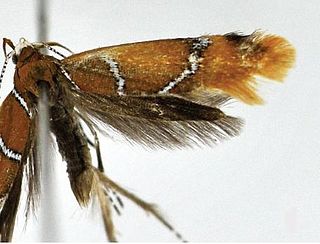
Promalactis is a genus of moths of the family Oecophoridae.

Promalactis bifurciprocessa is a moth of the family Oecophoridae. It is found in Anhui, China.

Promalactis convexa is a moth of the family Oecophoridae. It is found in Sichuan, China.

Promalactis papillata is a moth of the family Oecophoridae. It is found in Anhui and Zhejiang provinces of China.

Promalactis quadratitabularis is a moth of the family Oecophoridae. It is found in Sichuan, China.
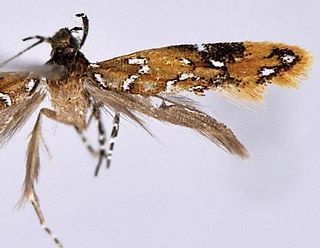
Promalactis ramispinea is a moth of the family Oecophoridae. It is found in Fujian, Guangdong, Hunan and Jiangxi provinces of China.
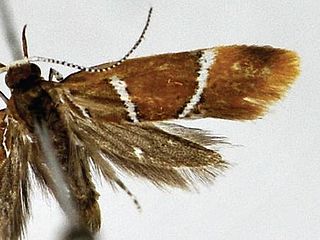
Promalactis scorpioidea is a moth of the family Oecophoridae. It is found in Jiangxi, China.
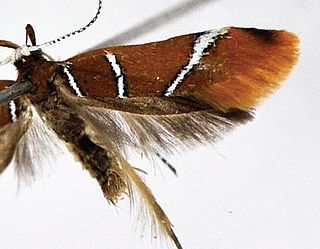
Promalactis similiconvexa is a moth of the family Oecophoridae. It is found in Sichuan, China.

Promalactis spinosicornuta is a moth of the family Oecophoridae. It is found in the Tibet Autonomous Region of China.

Promalactis strumifera is a moth of the family Oecophoridae first described by Du and Wang in 2013. It is found in Fujian, Guangdong, Guangxi, Jiangxi and Zhejiang provinces of China.

Promalactis uncinispinea is a moth of the family Oecophoridae. It is found in Sichuan, China.

Promalactis albipunctata is a moth of the family Oecophoridae. It is found in Jiangxi province of China and in Korea.

Promalactis dierli is a moth of the family Oecophoridae. It is found in the Tibet Autonomous Region of China and in Nepal.

Promalactis dimolybda is a moth of the family Oecophoridae. It is found in Fujian, Hubei, Sichuan and Zhejiang provinces of China.

Promalactis flavescens is a moth of the family Oecophoridae. It is found in Shaanxi and Sichuan provinces of China.

Trachypepla semilauta is a moth of the family Oecophoridae and was first described by Alfred Philpott in 1918. It is endemic to New Zealand and has been collected in Southland. This species inhabits southern beech forest on the side of mountains. Adults are on the wing in January.
Cryptolechia infundibularis is a moth in the family Depressariidae. It was described by Wang in 2006. It is found in Guangxi, China.

Opsitycha squalidella is a moth of the family Oecophoridae. It was described by Edward Meyrick in 1884. This species is native to Australia and is likely adventive to New Zealand.
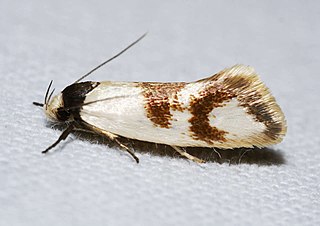
Antipterna trilicella is a species of moth in the family Oecophoridae, first described by Edward Meyrick in 1885 as Ocystola trilicella. It appears to be a moth endemic to Australia and confined to the east coast, occurring in Victoria, New South Wales and Queensland.

















